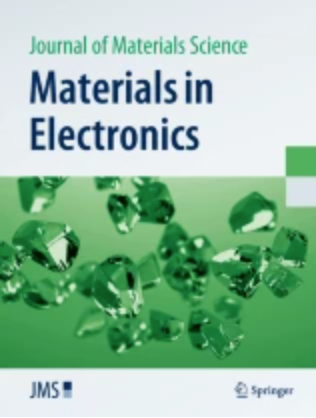Structural, optical and magnetic analysis of Zn0.95Ni0.05Se nanoparticles with annealing temperature
Abstract
In the present study, Zn0.95Ni0.05Se nanoparticles are synthesized using co-precipitation method. Four samples prepared at different annealing temperatures 200, 400, 600 and 800 °C. Structural properties of Zn0.95Ni0.05Se nanoparticles are understood by using XRD (X-ray diffraction) analysis which confirms increment in crystallite size from 8 to 16 nm along with phase transformation from cubic to hexagonal as the annealing temperature increased from 200 to 800 °C. TEM (Transmission electron microscopy) analysis also confirms the formation of nano-size particles in prepared samples. FE-SEM (Field Emission-Scanning Electron Microscope) analysis of nanoparticles has explained morphological behaviour and EDX (Energy-Dispersive X-ray) spectroscopy confirms formation of ZnO nanoparticles at higher temperature. FTIR (Fourier transform infra-red) spectroscopy analysis is confirming the presence of different functional groups in nanoparticles at different annealing temperatures. Optical energy band-gap has decreased from 4.97 to 4.8 eV as annealing temperature increased from 200 to 800 °C due to enhancement in nanoparticles’ size observed by UV–visible spectroscopy. The analysis of magnetic properties of nanoparticles is carried out by using VSM (Vibrating-Sample Magnetometer) with ESR (Electron Spin Resonance) techniques. VSM analysis of these nanoparticles shows ferromagnetic behaviour however as annealing is increased above 400 °C ferromagnetism disappears from Zn0.95Ni0.05Se nanoparticles showing diamagnetic properties. These VSM results are also confirmed by ESR observations.

 求助内容:
求助内容: 应助结果提醒方式:
应助结果提醒方式:


